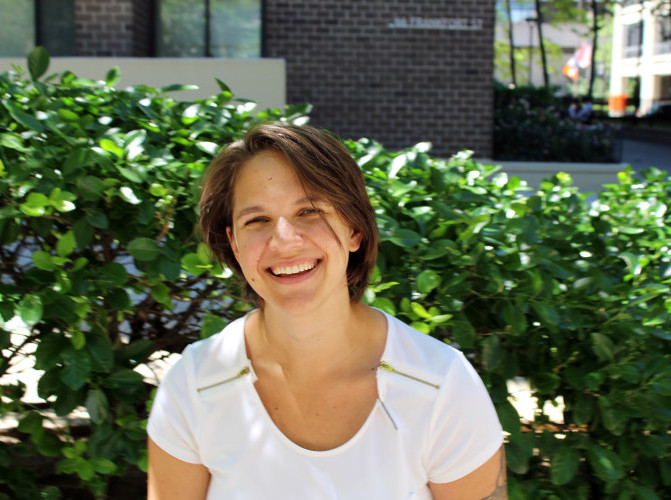Programming Associate: Jessa Orluk

Jessa grew up in a big old farmhouse next to a big old red barn in the Pioneer Valley of Western Massachusetts. After a childhood with late night summer bonfires, days spent floating on a river, and long drives on New England dirt roads, she knew that the environment would be central to her undergraduate studies. At Hampshire College, she focused on Political Ecology, or the study of how cultures divide human resources (knowledge, power, money) and natural resources (food, energy, land). As the Seasonal Programming Associate at Freshkills Park, Jessa is excited to develop innovative ways to teach the public about how amazing it is to turn a landfill in a park.
What is your name and title?
My name is Jessa Orluk and I’m a Seasonal Programming Associate at Freshkills Park.
What are you working on?
Right now, I’m looking into different education programs geared towards middle and high school students at different NYC museums, parks, and zoos. I look for innovative ways these programs promote themselves, how they distribute materials and what kind of materials they offer for students and educators. There are so many great programs out there—it almost makes me want to be in high school again just so I can be a part of it all! My research will be helpful in drafting a strategic outreach plan for our environmental education programs at Freshkills. Maybe there’s something different we can do to reach students and teachers, or maybe there’s a great collaboration between us and other institutions just waiting to happen. My job is to make sure as many students and educators as possible have a chance to learn with us at the Park.
In addition to developing our environmental education outreach, I’ll also be help facilitate tours and Citizen Science activities. It’s a nice complement to the research portion of my job. Who wouldn’t want to spend a few hours exploring outside? It also helps me see what students and teachers get the most excited about at the Park so I can highlight those aspects when promoting programs.
What drew you to Freshkills Park?
I always had a solid connection to the world around me. It was the basis of so many things—most of my family work in lumber, so there was always talk about land and maps and trees. A best friend lived next door, and her dad was a natural history professor who spent many days bringing us on various expeditions. I knew the environment would be central to my undergraduate studies, but I didn’t expect to be so fascinated by the social justice aspect of environmental issues. For example: Why do some communities have landfills, incinerators, or power plants nearby, and others don’t? My undergraduate studies gave me an analytical framework to analyze problems with an end goal of finding just solutions for people and the planet.
To me, Freshkills Park is an environmental justice project. Having environmental justice means equally distributing environmental benefits and burdens across all communities. The landfill was a huge environmental burden: bad smells, increased traffic, reduced air quality. Thanks to the work of grassroots community organizations, the landfill was closed. Now, we’re part of turning this burden into a benefit. Instead of trash, there is a renovated playground, soccer fields, a bike trail, and eventually over 2,000 acres of greenspace for the Staten Island community.
Environmental justice work can sometimes be disheartening. Communities around the world are facing huge, unmanageable environmental issues. Often, there aren’t many happy endings. Freshkills Park is one of the good stories. Everyone here is working hard to make sure the Park will be beneficial to people and the planet. I couldn’t be happier to be a part of this solution.
What is your favorite topic surrounding Freshkills Park and why?
I’m really interested in the social issues surrounding the park. What effects did the landfill have on the Staten Island community? What effects will the park have on the community? How can this change the way humans understand nature?
Garbage is this contradictory thing that’s a byproduct of our economy but we don’t really like it or know what to do with it. To most people it isn’t valuable at all. This has very real social effects on communities burdened with waste—it can make communities feel forgotten, undervalued or, well, like garbage.
I’m fascinated by how the Park is working against this by literally turning trash into a treasure. It reclaims the landfill and turns it into a positive by providing lots of different types of space for the community. My hope is that by doing this, people’s ideas of what “nature” is will also change. The park is a natural space, even if it’s the former site of a landfill. Staten Island is a natural space, and so is New York City! Breaking that divide between what’s “nature” and what’s not makes bigger environmental issues, like climate change, a reality instead of an abstraction.
Favorite color?
I’m a sucker for jewel tones. They remind me of a nice day at a beautiful beach—deep navy blue, turquoise, dark purples, copper, beige and lots of greens.




